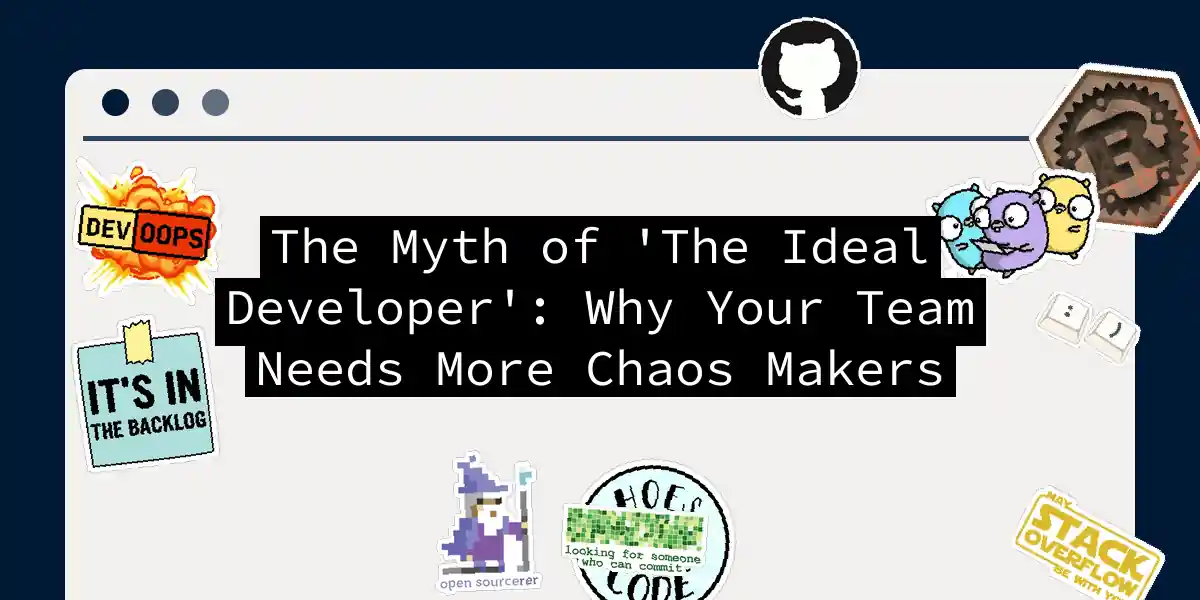Picture this: a mythical creature that writes perfect code on first try, never questions requirements, and thrives on 72-hour coding marathons. Spoiler alert - they’re as real as NPM dependencies without security vulnerabilities. Let’s dissect why chasing this unicorn hurts your projects, and how embracing cognitive diversity creates teams that actually ship value.
The Swiss Army Knife Fallacy
The “full-stack ninja rockstar” archetype fails precisely where it promises to excel. When your team consists of clones:
- Bug multiplication: Similar blindspots create systemic vulnerabilities (remember the left-pad apocalypse of 2016?)
- Innovation stagnation: Research shows gender-diverse teams produce 41% more patentable ideas
- User empathy gaps: Homogenous teams often miss edge cases (ever tried using voice apps with a stutter?)
Why My Team Hired a Philosopher Who Can’t Code… And Won
Our React components started looking different after adding Maria, a former ethics professor:
// Before diversity
<Checkbox label="I agree" onClick={trackConsent} />
// After diversity
<ConsentFlow
granularControls={true}
accessibilityOverrides={prefersReducedMotion}
localizationStrategy={dynamicCLDR}
/>
She asked one killer question: “Why are we making consent opt-out instead of opt-in?” Cue 48 hours of existential crisis… followed by 23% higher conversion rates from users who felt respected.
The SPF (Situation Processing Framework) for Technical Decisions
- Gather perspectives
Run threat modeling sessions with:- Junior devs (“What seems magic here?”)
- QA engineers (“How would I break this?”)
- Support reps (“What makes users cry?”)
- Conflict mining
Use code annotations for debate:def calculate_risk(): # [Security Team]: Require 2FA threshold here # [UX Team]: 67% dropoff at 2FA step observed # [Business]: Compliance needs SEC Rule 17a-4 return split_the_difference() - Implement with traceability
Git commits should reference perspective tags:git commit -m "FEAT: Dark mode toggle [UX: Contrast compliance][ADA: WCAG 2.1][Perf: 3ms render penalty]"
Debugging Your Hiring Process
Replace LeetCode hazing with real problem filters:
| Toxic Approach | Inclusive Alternative |
|---|
“Whiteboard binary trees” → “Debug our CI pipeline config (it’s on fire)”
“Years of React experience” → “Recreate this UI from memory using
“Culture fit” → “Add a feature that contradicts your personal preferences”
Our best hire ever? A former barista who automated drink orders using Twilio and Excel. She now leads our workflow orchestration team.
The Metrics That Actually Matter
Forget velocity points - measure what diversity enables:
After implementing perspective-driven retrospectives, we saw:
- 19% faster incident resolution (more eyes on weird edge cases)
- 83% reduction in “works on my machine” tickets
- 47% increase in PR comments containing “Hmm, but what if…”
Your New Onboarding Checklist
- Install the IDE of choice (including Notepad++ for that one person)
- Grant access to monitoring tools
- Assign three coffee chats with people who:
- Disagree with your technical approach
- Work in different domains
- Have different Myers-Briggs letters than you
- Require one controversial opinion in your first PR The future of software isn’t about finding perfect developers - it’s about creating imperfect but complementary teams. After all, React wasn’t built by a solo hero, but by Facebook engineers frustrated with Angular’s limitations. Sometimes, the best solutions come from the “wrong” backgrounds. Now if you’ll excuse me, I need to explain to our new compiler wizard why “sudo” isn’t actually magical - she’s a former Haskeller who keeps trying to monad our infrastructure. The chaos continues… and our error rates keep dropping.
